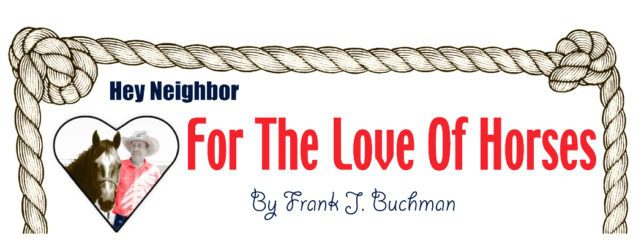“My horse is left-handed. He always turns easier to the left than the right.”
That comment is frequently heard from horseback riders when their mounts will go a specific direction, take a lead or spin one way in preference or better than the opposite.
Consequently, it is assumed, that not unlike humans, a horse is left-handed, or right-handed, depending on the direction which is easiest to maneuver.
That’s not necessarily the case. The subject is actually much more complex as revealed when a question was posed to Julie Goodnight of Goodnight Training Stables, Inc., Ponca Springs, Colorado.
A clinician at the recent EquiFest of Kansas, Goodnight is known as The Horse Master on her award-winning RFD-TV show. Her Natural Horsemanship Training techniques were reviewed during six sessions over three days at Wichita.
In a discussion about horses performing one direction better than another, Goodnight compared horses to people.
“A horse’s brain is similar to a human’s anatomically, although they do not think and process information in the same way,” Goodnight said.
Human traits, such as artistic talent and higher logic abilities, are not qualities of horses. “They simply do not have that intellectual capacity,” Goodnight contended.
Like the human brain, the horse brain is divided into two lobes, the right brain and the left brain. “Also like humans, the right brain controls the left side of the body and visa-versa,” Goodnight revealed.
Two hemispheres of the brain are connected with neurological connective tissue which allows messages to be transferred back and forth between the two parts.
“In humans, the connective tissue is highly developed,” Goodnight insisted. However, in horses, it is undeveloped. Hence, the one-side nature of horses.
“Humans think with both sides of our brain all the time,” she continued. “When we talk about someone who is ‘right brained,’ we are saying that person’s right brain is dominant, and since the capacity of creativity is in the right side of the brain, that person has more artistic ability.”
Everybody has the capacity for creativity, but some people seem to have more talent than others. “Remember, these are human traits, not equine,” Goodnight clarified.
A story was related about a horse that appeared to have mathematical abilities.
The horse could paw out the answer to any math problem, even when the owner wasn’t present. After much testing, animal behaviorists were stumped as to how the horse was able to do math.
Finally, someone had the idea to put a visual barrier between the human and the horse, and the horse could no longer solve problems.
“The moral of the story is that the horse had learned to watch the human for reactions that indicated he had the correct answer,” Goodnight explained. “He would begin to paw until he saw the right reaction from the person and then quit. It worked every time, and the horse was a genius, but he did not have mathematical ability.
“This is another example of how horses train humans, but that is a whole different subject,” Goodnight quickly added.
So, horses don’t have the intellectual capabilities for personality traits like in humans.
“Since we cannot interview the horse or test his skills, it is hard to say how the brain affects his personality,” Goodnight continued. “The dominant side does affect how the horse moves and responds to signals from its environment.”
It also affects how the horse learns. “Although horses have little intellectual capacity in terms of logic and problem solving, they do learn quite well,” Goodnight credited. “For better or for worse, horses learn the wrong things just as quickly as the right thing, and it seems like it is far easier to teach them the wrong things.”
Since there is little communication between the hemispheres of the horse’s brain, a horse pretty much thinks with one side of his brain at a time.
“This has many implications for behavior and safety,” Goodnight analyzed. “For learning, this one-sidedness means that we have to train both sides of the horse’s brain, but we should only work on one side of the horse at a time.”
In other words, when training the horse to be mounted, one would work first on the left side, train the skill thoroughly, and then go to the right side of the horse and start again with the training.
“For some horses, the second side will come quickly, but for others, it is like starting all over,” Goodnight recognized. “Being able to switch from side to side fluidly with any skill will only happen once the horse is thoroughly trained on both sides.
“How quickly a horse picks up a new skill on the second side is a good indicator of how balanced, or two-sided the horse may be, and of course is a good sign for performance training,” Goodnight concluded.
